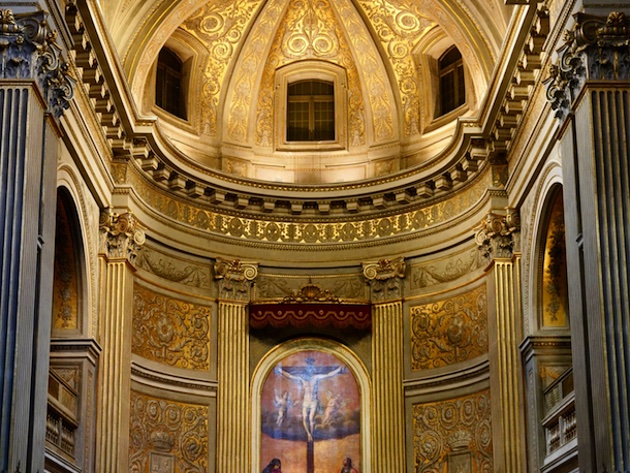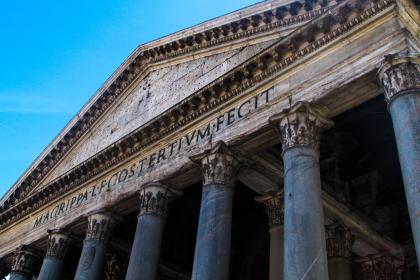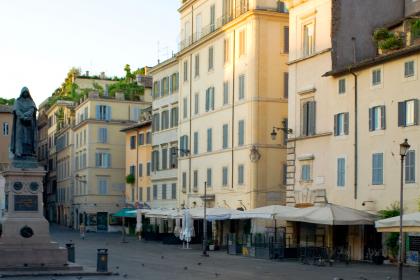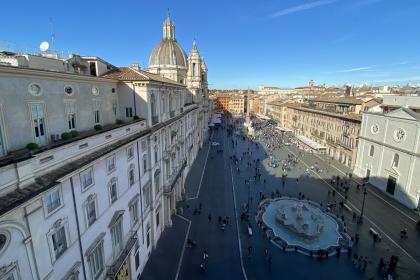
Santa Maria in Monserrato is located in the Campo Marzio area, in the historic centre, and is the National Church of the Spaniards. Founded in 1506 when the Brotherhood of the Virgin of Montserrat in Catalonia built a hospice for Spanish pilgrims, the church was built according to the design of Antonio da Sangallo the Younger in 1518. The construction work was subsequently interrupted due to lack of resources. but despite this, the architects who followed one another, such as Bernardino Valperga and Francesco da Volterra, respected the original project. In 1821 it was restored by Giuseppe Camporese and underwent a final restoration in 1929.
The large façade, with two orders, was designed by Francesco da Volterra; to the great architect we owe the lower one with Corinthian pilasters, it has an eighteenth-century portal between columns adorned with a marble group: "The Madonna and Child who saw the rock" with allusion to the mountain where the Catalan sanctuary of Monserrato was built and niches in the side spans. The higher order appears much simpler.
The interior has a single nave divided by high composite pilasters with side chapels and a large apse. In the church you can admire wonderful works by Sansovino including San Giacomo Maggiore or by Annibale Carracci, as San Diego d’Alcantara, while in the portico of the Spanish College there is the portrait bust of Pedro Foix Montoya, by Gian Lorenzo Bernini. Among other valuable works inside, there is the fresco above the arch of the central chapel on the right, by Francesco Nappi representing the Sleep of the Virgin; the one on the left, by Giovanni Battista Ricci known as Novara, shows the Coronation of Our Lady.
Photo credits: courtesy of Church of Santa Maria in Monserrato of the Spaniards official site
The Pantheon

 Condividi
Condividi
Campo de’ Fiori

 Condividi
Condividi
Navona Square

 Condividi
Condividi
The most iconic square of Baroque Rome
Information
For the timetable of the masses and the visiting conditions, please contact the Obra Pia Stabilimenti Spagnoli in Italia.
 Condividi
Condividi
Location
To find out about all accessibility services, visit the Rome accessible section.











































